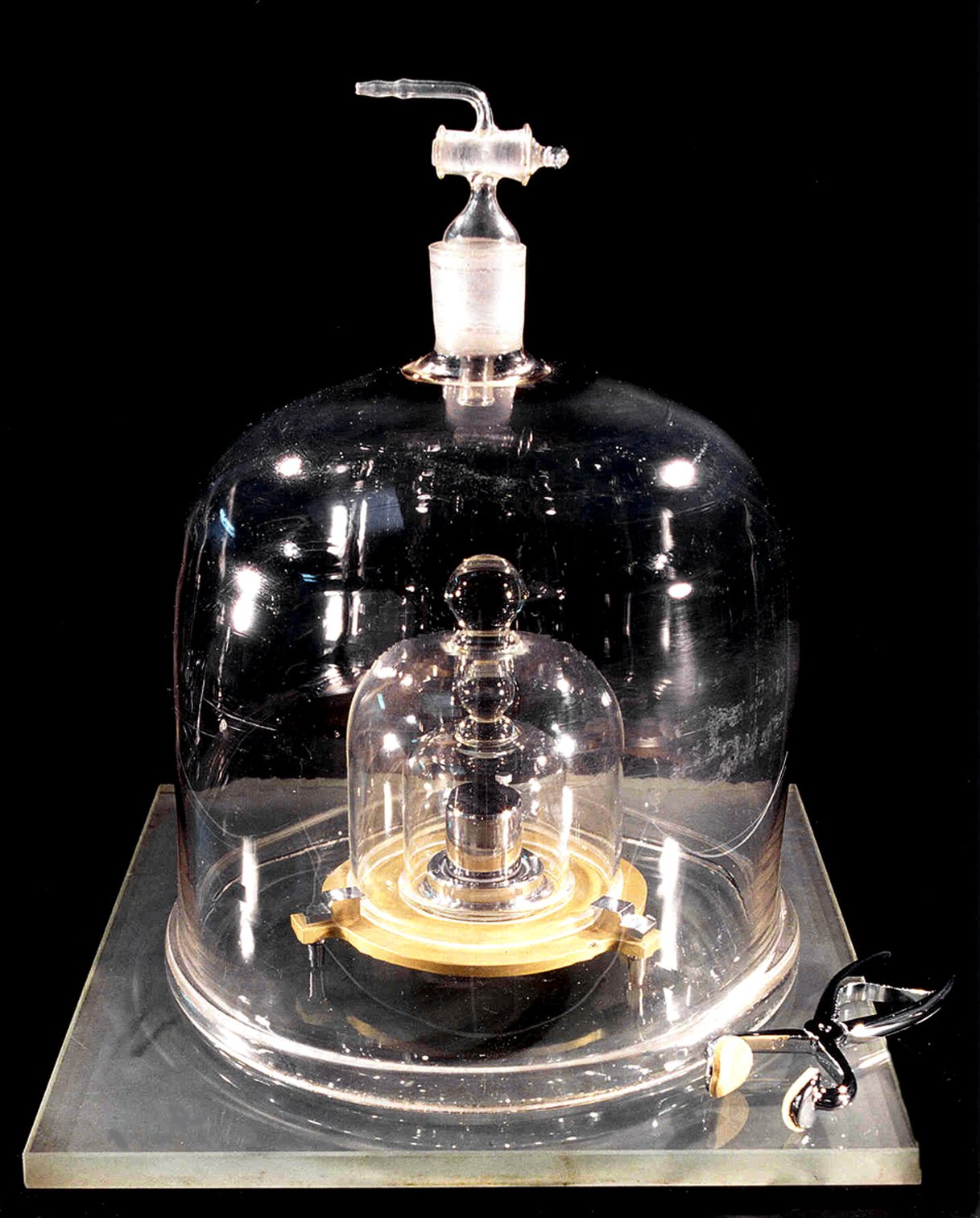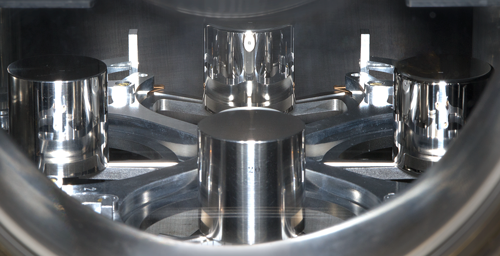Kilogram: Introduction
For more than a century, the kilogram (kg) — the fundamental unit of mass in the International System of Units (SI) — was defined as exactly equal to the mass of a small polished cylinder, cast in 1879 of platinum and iridium.
Kept in a triple-locked vault on the outskirts of Paris, the platinum-iridium cylinder was officially called the International Prototype of the Kilogram (IPK). It even had a nickname: Le Grand K (The Big K). The accuracy of every measurement of mass or weight worldwide, whether in pounds and ounces or milligrams and metric tons, depended on how closely the reference masses used in those measurements could be linked to the mass of the IPK.
That situation has changed radically. In November 2018, the international scientific community voted to redefine the kilogram, freeing it from its embodiment in one golf-ball-sized artifact, and basing it instead on a constant of nature. That transformation was as profound as any in the history of measurement.
One Mass to Rule Them All
After 1960, the kilogram was the only SI unit still defined in terms of a single manufactured object. So to ensure the accuracy of mass and weight measurements, all the standard masses used in all the measurements around the globe were, in theory, to be directly compared to the IPK — which was kept by the International Bureau of Weights and Measures (BIPM) in Sèvres, France.

That was, of course, impossible. As a practical matter, many countries kept one or more primary 1 kg standards in their main measurement science laboratories, known as national metrology institutes. It was those masses whose values were periodically adjusted — or “calibrated” — against the IPK.

The primary national standards were then used to calibrate national "working standards" that were used for further calibrations of still other standards. In this fashion, the kilogram standard was ultimately disseminated across the nation in a carefully recorded chain of comparisons that traces back to the original national standard and thus ultimately to the IPK.
In the United States, the dissemination of mass — indeed, of all seven SI base units — is the responsibility of the National Institute of Standards and Technology (NIST), part of the U.S. Department of Commerce. NIST houses and maintains what were America's official mass standards until 2019. The K20 mass served as the primary prototype national standard. The other, called K4, served as a “check” standard that monitors the constancy of K20’s mass.

Credit: J. Lee/NIST
While no longer official standards, these and other masses are still used to disseminate the definition of the kilogram to outside laboratories and industry. NIST also maintains six other platinum-iridium prototypes (K79, K85, K92, K102, K104 and K105). Numerous stainless-steel working standards are used for comparisons to various test masses. Additional sets of working standards are then used to calibrate masses up to 27,200 kg and down to 1 milligram (mg, a thousandth of a gram).
The agency was also responsible for calibrating the U.S. mass standards against the IPK — or, usually, against one of BIPM's authorized copies — at regular intervals.
Drifting and Scaling
Not surprisingly, making intermittent comparisons among various artifacts was extremely laborious and involved many stages of repeated measurements. More problematic, however, was the fact that the measured mass of each individual standard changed, or "drifted," a bit over time.
Moreover, this mass-comparison system was not easily scalable from large to small. The smaller the scale, the larger the uncertainty in measurement, because a very long sequence of comparisons is necessary to get from a 1 kg standard down to tiny metal mass standards in the mg range, and each comparison introduces an added uncertainty. As a result, although a 1 kg artifact can be measured against a 1 kg standard to an uncertainty of a few parts in a billion, a milligram measured against the same 1 kg has relative uncertainties of a few parts in ten thousand.
That uncertainty is not satisfactory for the ever-more-demanding needs of modern measurement science, device manufacture, material science, pharmaceutical research and testing, and environmental monitoring, to name only a few. Increasingly, those endeavors require accurate measurements on the order of micrograms (millionths of a gram) and smaller. There was widespread agreement that the world needed a system in which scaling measurements did not mean increasing uncertainty.
The problems with the old system of defining mass were addressed in November 2018 when a group of 60 nations voted to redefine the kilogram in terms of an invariant of nature: the Planck constant. Scientists around the world laid the groundwork for that change for years.

